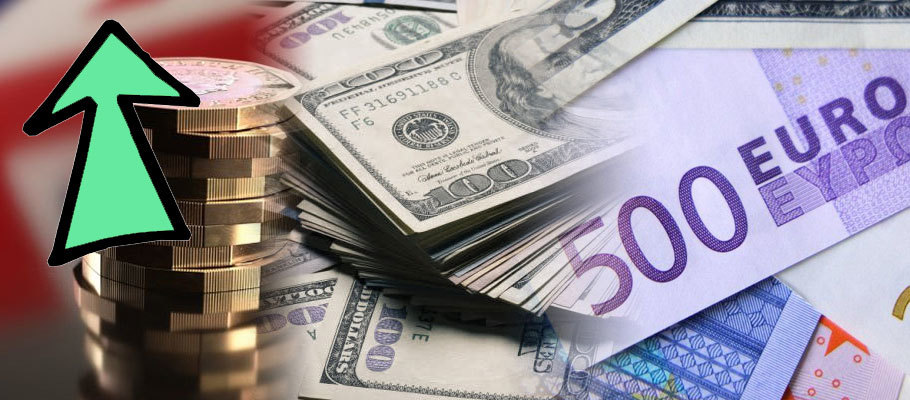
Published: November 9th, 2022
Sterling was softer on Tuesday 8th November after posting a strong recovery on Monday, as price action suggested the Pound was being driven by global factors in a week that was light on domestic economic data.
Analysts however say Britain’s domestic outlook ‘remains challenging’ and GBP’s gains over the last 48 hours may not be sustainable.
The Pound was still best-performing major currency on Monday despite concerns, as global markets extended the rally from last Friday and gave the UK currency space to recover some of the losses suffered following last Thursday's Bank of England meeting.
If the mood music in global markets stays upbeat, Sterling’s recovery might have room to extend through mid-week.
‘If risk sentiment holds then we should see modest Sterling gains,’ wrote Barclays currency analysts in a weekly market commentary.
Global stock markets were up on Friday 4th November and stayed there at the start of this week Monday as investors bet China was preparing to end its zero-Covid policy. Economists believe such a move could give the faltering global economy a much-needed kick and provide risk-sensitive currencies like GBP a welcome nudge.
The Pound to Euro rate dropped to 1.1382 last week but was up to 1.14576 at the time of writing. The Pound to Dollar exchange rate gained by a full percentage point on Monday and was up to 1.15362 at the time of writing.
The Bank of England raised interest rates by 75 basis points last (3rd November) Thursday but cautioned that rates were unlikely to go as high as the ca. 5.25 per cent investors were watching for ahead of the announcement.
Sterling made a strong start to 2022 in January and February thanks to an after-Omicron economic rebound, plus expectations at the time that the BOE was readying new interest rate hikes.
Numbers from the Office of National Statistics (ONS) showed that retail sales lifted by nearly two per cent month-on-month in January, beating consensus forecasts of one per cent and leaping ahead of December's negative four per cent reading.
In a market analysis published the week of February 21st, ING's FX Strategy Unit said that UK retail sales came back in January with a vengeance as the Omicron worries began to dissipate. 'Sterling now looks relatively less exposed than to adverse swings in geopolitical sentiment than the Euro and nordic currencies like Norwegian Krone.’
ONS data also shows commuter travel in Britain's most significant cities bouncing back to pre-Omicron levels, supporting expectations that February will be remembered as the start of a solid rebound in growth.
ING says the latest bus, train and mobility numbers show that offices and services in central London are now about as busy as they were before Omicron.
The figures arrive after Westminster announced the end of all Covid-19 related restrictions in England, even eliminating the strict testing measures that had been in place for travel, after determining that Omicron is much less deadly than earlier waves of coronavirus.
Near-term indicators paint a picture of an economy coming off life support after a dull December-January. February 20th marked the fifth consecutive week of increasing retail footfall. The ONS also found that UK purchases of restaurant (seated) meals rose by 17 percentage points to levels equivalent to the same week in 2020.
Altogether the numbers could provide support for Bank of England policymakers eager to announce another interest rate rise in March, progressing a cycle that has helped push-up Sterling’s value in late-2021 and early 2022.
Sterling also had a fillip from two other consensus-beating data releases. Wage and job numbers released the week of February 21st confirmed that the UK's job market is 'tight' with not enough candidates available to take on record-high job vacancies.
BoE rate hikes are also being driven by the economy's higher inflation levels, which rose to 30-year highs in January.
Some forex strategists are urging caution despite the positive indicators. They say pound investors could be pricing in more BoE rate hikes than the bank is likely to deliver.
Mike Pederson, a forex analyst at Danske Bank, told Bloomberg that while the pound may be supported by further rates action in March or May, 'the impact of hikes could be priced-out rapidly, eliminating any early mover advantage.
He said the European Central Bank (ECB) is also set to raise its key rate in September or October, 'so we believe the situation for the euro will need to be revised. Currency traders will have to adjust expectations for the pound's key rate to the downside at some stage.'
If the market is going to sustain its high-rate hike expectations for the Pound, British inflation expectations will also have to move considerably higher.
Banker Julius Baer said in a market analysis that 'A sluggish longer-term UK growth outlook and the potential for inflation to drop back below BoE targets in two years suggest that the four rate hikes markets have priced in for this year are too optimistic. We believe a hike in May or before could happen, and maybe one additional rise in the summer. After that, we see a holding pattern from the BoE.'
Despite post-Brexit worries and the ongoing pandemic, Britain’s economy has weathered the Omicron outbreak better than had been expected. This week’s ONS figures have prompted widespread speculation that Blighty is already bouncing back from its autumn 2021 setback.
Britain's GDP dropped by 0.2 per cent in December 2021 when businesses and households were compelled to scale back spending after the November emergence of the Omicron variant of COVID-19, leaving the economy growing at a rate of one per cent in the closing quarter of the year.